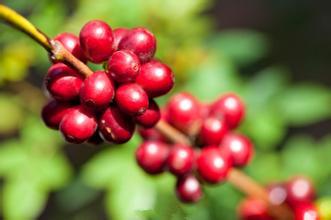Rich texture A brief introduction to the description of the flavor and aroma characteristics of Yega Shiffiwaka coffee

At first, Yejassefi's coffee trees were planted by European monks, and later by farmers or cooperatives. Yega Xuefei is actually constructed by the surrounding coffee communities or cooperatives, including: Hafusha, Hama, Biloya.
These mountain villages are foggy, like spring all year round, with a gentle breeze in summer, cool but not hot, rain but not damp, and no cold damage in winter, giving birth to a unique regional flavor of citrus and flowers. Coffee trees, mostly planted in farmers' backyards or mixed with other crops in the fields, were planted by European monks (similar to Belgian monks who advocated growing wheat and brewing beer), and later transferred to farmers or co-operatives. Yega Xuefei is actually built by surrounding coffee communities or cooperatives, including Edido, Hafusha, Hama and Bdon near the Fog Valley.
Most coffee beans are washed with water, but a few peas are deliberately sunburned to enhance their charming fruit aroma and mellow thickness. These mountain villages are foggy, like spring all year round, with a gentle breeze in summer, cool but not hot, rain but not damp, and no cold damage in winter, giving birth to a unique "regional flavor" of citrus and flower fragrance. Caffeine F trees are mostly planted in farmers' own backyards or mixed with other crops in farmland, and the yield per household is not much, which is a typical pastoral coffee. Almost all of the award-winning beans come from the above-mentioned coffee villages and communities.
The so-called "Yega Chuefei" refers to strong aromas of jasmine, lemon or green citric acid, as well as sweet peaches, almonds and tea. The author's tasting experience has only one sentence: "Coffee entrance, flowers in full bloom!" Except for the comfort of the taste buds and olfactory cells in the nasal cavity touched by flowers. In addition to the fragrance of flowers, the delicate mellow thickness is like silk and feels wonderful to the touch. At present, many coffee chemists begin to study the microclimate and soil and water around Yega Xuefei, in order to sum up the planting equation of fine coffee.
The bean comes from a single farm, Ethiopia, and is processed by the Waka Cooperative (Worka cooperative). Alemayehu Alako Farm is a member of the Waka Cooperative.
The Waka Cooperative, located in the south of Gedeb District, was founded in 2005 and joined the famous Yejia Coffee Farmers Cooperative Union (YCFCU,Yirgacheffe Coffee Farmers Cooperative Union) that year, which is famous for producing high-quality sun Yega Coffee Farmer. The Waka Cooperative has about 300 coffee farmers. YCFCU was founded in 2002 and includes 26 other cooperatives serving more than 45000 coffee farmers. Compared with the traditional sun-treated Harald area, sun exposure is not common. As the first water washing plant in Ethiopia, coffee drinkers are more familiar with Yejia, which is famous for its elegant lemon and citrus style.
The coffee flavor treated with water is not easy to have wild flavor and has the characteristics of purity and freshness, which is suitable for light baking; this washing Ethiopia can reach the highest grade of G1, which is already a grade with few defects.
Flavor: bright floral, dry and wet fragrance all have strong citrus flavor, lemon, kumquat, white grape juice, etc., colorful flavor, rich sweet and sour citrus in the middle and back, rich sweetness like soda, distinct personality, outstanding, very rare to see.
Wash Yega G1]
Country: Ethiopia
Grade: G1
Production area: Worka Waka
Baking degree: shallow baking
Treatment: washing
Variety: native species
Processing plant: Waka cooperative
Flavor: lemon, kumquat, white grape juice
Portugal and the Ottoman Empire invaded one after another in the 16th century. British troops invaded Ethiopia in 1867 and Sudanese Mahdi troops invaded in 1887.
In 1889, Mennelik II became emperor, unified the country, established the capital Addis Ababa, and established the territory of modern Ethiopia. In 1890, Italy invaded, squeezed out British power and declared Ethiopia a "sanctuary". In 1896, Menlinique II led the army to defeat the Italian army in Adua and was forced to recognize the independence of Ethiopia. [1]
During the reign of Emperor Selassie
Haier Selassie was made regent in 1916 and became king in 1928. On November 2, 1930, he was crowned Emperor Haier Selassie I. In 1936, Italy invaded again, occupied Addis Ababa, conquered Ethiopia, and Selassie went into exile in London. The allies defeated Italy in 1941 and Selassie I returned home on May 5 of the same year. In July 1991, after the 1974 domestic coup, EFDR presided over a national conference attended by more than 20 political and ethnic organizations. The meeting adopted the Transitional Charter and elected an 87-member House of Representatives, with EGF Chairman Meles Zenawi as President and President of the Transitional Government. A transitional government was established. On 24 May 1993, Eritrea (formerly Eritrea Province of Ethiopia) became a sovereign State through a referendum under the supervision of the international community. [3]
The period of the federal government
In December 1994, the Constitution of the Federal Democratic Republic of Ethiopia was formulated. According to the Constitution, Ethiopia will implement a federal system and a parliamentary cabinet system after the general election for a term of five years. After the national election in May 1995, the Federal Democratic Republic of Ethiopia was established on August 22, and Meles became prime minister in her capacity as chairman of the majority party of the people's House of Representatives. On May 14, 2000, Ethiopia held a national election, and EGF defeated other opposition parties by an absolute majority to stay in power. In October, the new federal parliament and government were established, and the speakers of both houses and Prime Minister Meles were re-elected, and the original cabinet also remained in office with the approval of the parliament. In October 2001, May readjusted government institutions and reshuffled the cabinet, adding the Ministry of Youth, Sports and Culture and the Ministry of Taxation, and setting up a new cabinet composed of 18 ministers. In the fifties and sixties of this century, many African countries became independent one after another and adopted green, yellow and red as their national flags, so they were called "Pan-African colors." Ethiopia is one of the ancient countries in Africa, with a long history of more than 3000 years, giving green, yellow and red colors deeper roots in this land. Historically, they are closely related to the liturgy of the Coptic church, and are worshipped as the symbol of the trinity of the Father, the son and the Holy Spirit, reflecting the three virtues of loyalty, hope and kindness advocated by human freedom. These three colors also represent three regions of Ethiopia: Tikleh (red), Amhara (yellow) and Theo (green). Green represents fertile land, mild climate and rich plant resources, but also symbolizes hope for the future; yellow symbolizes peace and fraternity, as well as the people's determination to build the country; red symbolizes that the people are ready to shed blood and sacrifice to defend the motherland.
Although the Ethiopian Yirgacheffe coffee is petite, it is gentle and delicate and sweet. As the hometown of coffee, thousands of years of planting history and processing tradition in Ethiopia have created high-quality washed Arabica beans. Light baking has unique sweet aromas of lemon, flowers and honey, soft acidity and citrus flavors, fresh and bright on the palate. No milk or sugar, let the rich texture and unique soft flower scent brush your taste buds, leaving an endless aftertaste.
Yega Xuefei is a small town, 700-21000 meters above sea level, synonymous with Ethiopian boutique coffee. It has been a wetland since ancient times. The ancient saying "Yirga" means "settle down" and "Cheffe" means "wetland". The mode of production and flavor of coffee here is so outstanding that Ethiopian coffee farmers compete to be proud of the flavor of their coffee, making it the most famous coffee producing area in Africa.
Important Notice :
前街咖啡 FrontStreet Coffee has moved to new addredd:
FrontStreet Coffee Address: 315,Donghua East Road,GuangZhou
Tel:020 38364473
- Prev

A brief introduction to the treatment method of grinding degree and roasting degree of Guatemala Antigua coffee
Caption: this is a particularly elegant and complex coffee. This coffee with delicate acidity balances the subtle texture of cocoa powder with soft spices. Processing: washing method. Location: Guatemala, the westernmost country in Central America, bordering Mexico, Belize, Honduras and El Salvador. Antigua is in the south-central part of the country. Class
- Next

A brief introduction to the History and Culture of the Origin and Development of Yega Chefevoca Coffee
At first, Yejasuefei's coffee trees were planted by European monks (somewhat similar to Belgian monks who advocated planting wheat and brewing beer), and later by farmers or cooperatives. Yega Xuefei is actually built by surrounding coffee communities or cooperatives, including Edido, Hafusha, Hama and Bdon near the Fog Valley. Most coffee beans are washed with water.
Related
- Detailed explanation of Jadeite planting Land in Panamanian Jadeite Manor introduction to the grading system of Jadeite competitive bidding, Red bid, Green bid and Rose Summer
- Story of Coffee planting in Brenka region of Costa Rica Stonehenge Manor anaerobic heavy honey treatment of flavor mouth
- What's on the barrel of Blue Mountain Coffee beans?
- Can American coffee also pull flowers? How to use hot American style to pull out a good-looking pattern?
- Can you make a cold extract with coffee beans? What is the right proportion for cold-extracted coffee formula?
- Indonesian PWN Gold Mandrine Coffee Origin Features Flavor How to Chong? Mandolin coffee is American.
- A brief introduction to the flavor characteristics of Brazilian yellow bourbon coffee beans
- What is the effect of different water quality on the flavor of cold-extracted coffee? What kind of water is best for brewing coffee?
- Why do you think of Rose Summer whenever you mention Panamanian coffee?
- Introduction to the characteristics of authentic blue mountain coffee bean producing areas? What is the CIB Coffee Authority in Jamaica?

